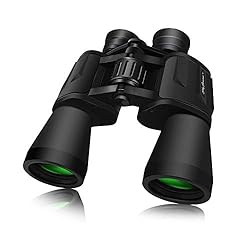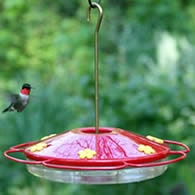Cedar Waxwing Nesting, Feeding, and Getting Drunk Habits
The Cedar Waxwing is a here today gone tomorrow type of bird. A flock of these birds may descend on a fruiting crab apple tree, passing ripe fruit from one bird to the other.
This cooperative feeding is worth watching as the waxwings make their high-pitched calls the whole time.
When the fruit is gone, so are the birds. Watch them while you can.
The following information by Eldon Greij will give you more information on the habits of these birds.
Handsome Is As Handsome Does
The sleek and handsome Cedar Waxwing is one of the most welcome avian visitors. Its silky plumage sometimes defies seeing individual feathers.
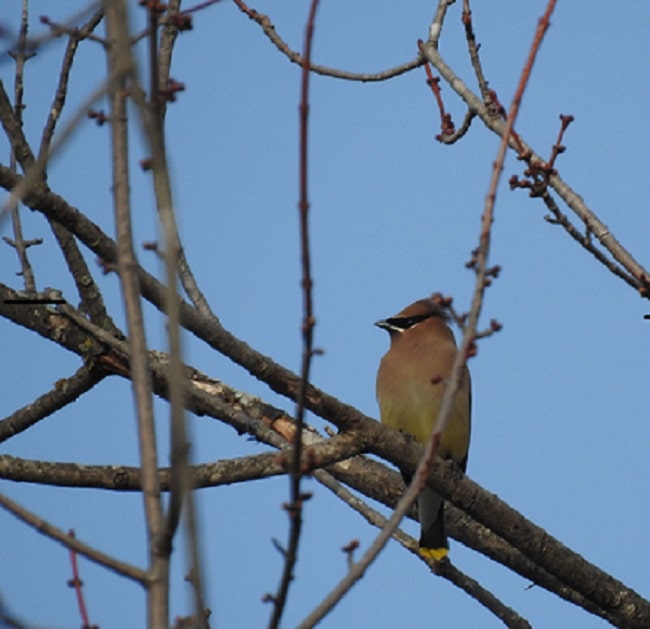
Male Cedar Waxwing
Description
What a Cedar Waxwing Looks Like
The striking head sports an elongated crest with a black face mask and the generally brown and gray plumage has a black chin-throat and a soft yellow belly.
The cedar waxwing has a western cousin, the Bohemian waxwing, which has a similar plumage but is gray on the belly, rusty under the tail, and has small white and yellow markings in the wings.
Both have a yellow terminal tail bar. The yellow color results from the pigment carotene that is produced by plants and taken in when feeding.
Cedar Waxwing Call - Sound
In recent years, waxwings with orange terminal tail bars have appeared because the birds have fed on exotic honeysuckle fruits which have a different carotene pigment.
Another unusual plumage marker is the red waxy tips on the ends of the inner wing feathers, the secondaries.
The purpose of these red tips is not clear, but they are more common on older birds.
Birds with red-tipped secondaries breed earlier than those without and generally rear more young.
Red tips, therefore, probably are important signals for mate selection, functioning as "badges" to designate the fitness of individual birds.
Waxwings are very social and usually travel in flocks. Rarely does one see a single bird.
Their high-pitched twittering is a dead giveaway for those with fine-tuned hearing.
What do Cedar Waxwings Eat?
Cedar Waxwings eat about 80% fruit. They were named cedar waxwings because of their strong attraction to the red cedar tree (actually a juniper) with its sweet blue fruits.
As the supply of slow-growing red cedars dwindled because of their value as fence posts, storage chests, and the main wood for pencils, waxwing diets became more varied.
They typically feed near the tips of fruit-bearing branches.
Often you'll see them hanging upside down to pluck favorites such as cherries, crabapples, and hawthorn fruits which are high in sugar content.
Waxwings are susceptible to intoxication, especially when several warm days follow a cold frost.
The cold causes cells in the fruit to burst, and yeast works on the mash, converting sugar to alcohol.
There are many records of birds flying out of control from the effects of alcohol.
Many are harmed by not being able to metabolize the alcohol quickly enough.
Sometimes, when waxwings are lined up on a branch, the bird nearest the fruit cluster will pass fruit to its neighbor, which in turn, may pass it on down the line.
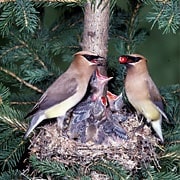
Cedar Waxwing Pair Feeding Nestlings
Nesting Habits
Waxwings nest later in summer than most backyard birds. The reason they nest late is that they synchronize hatching with fruit development.
The nest is usually situated in a tree and is a cup-shaped bulky collection of grasses, shredded bark, rootlets, and lined with moss, fine grasses, and other soft materials.
Both males and females bring nest material, but females do most of the nest building.
Egg laying begins within 1 to 3 days after the nest is completed. Laying one egg each day until a clutch of 4 or 5 eggs.
| Cedar Waxwing Nesting Stats | |
|---|---|
| Eggs | 4 - 5 |
| Incubation | 12 days |
| Nestling Phase | 13- 14 days |
| Broods | 1 - 2 |
Cedar Waxwing eggs are pale blue or blue-gray with black or gray blotches.
The female is the only one that incubates (gestation period isn't the term used with birds) the eggs and will do so for 12 days.
Nestlings spend another 13 days in the nest before fledging. 1 - 2 broods raised each season.
Habitat and Migration
Waxwings breed across North America from the lower tier of Canadian provinces south to the northern gulf states.
Their primary wintering site is in the southern U.S., but the species is nomadic and irruptive.
Consequently, they can be found anyplace in the United States and sometimes as far south as Costa Rica during the winter.
Typically waxwings gather for fall migration in August, although some will wait as long as October before migrating.
Keep your eyes on the neighborhood fruit trees. Regardless of the time of year, a flock of cedar waxwings can drop in at any moment.
You might like: My Baby Cedar Waxwing Larry
Frequently Asked Questions About Cedar Waxwings
Do Cedar Waxwings Mate for Life?
Studies show that Cedar Waxwings will stay together throughout the breeding season but there are no studies that show they mate for life.
If a second nest is begun, it's by the same pair.
Do Cedar Waxwings Eat Insects?
They do eat insects. Sometimes flying over water to catch emerging insects such as dragonflies.
Often they will hunt from a perch. Sighting an insect, they will sweep out to catch it. This beahavior is called "hawking".
Do Cedar Waxwings Come to Feeders?
Not really. They tend to eat fruit high in the trees. A large platform feeder with raisins, cranberries, grapes, and chopped apples may draw them.
Most likely you would get many other species of birds eating all the fruit before a Waxwing ever notices it's there.
Credit: Eldon Greij, founding editor of Birder's World magazine and former president of Avian Enterprises. Used with permission.
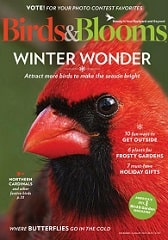
|

|

|

|
| Birds and Blooms | Pioneer Woman | People Magazine | First For Women |



